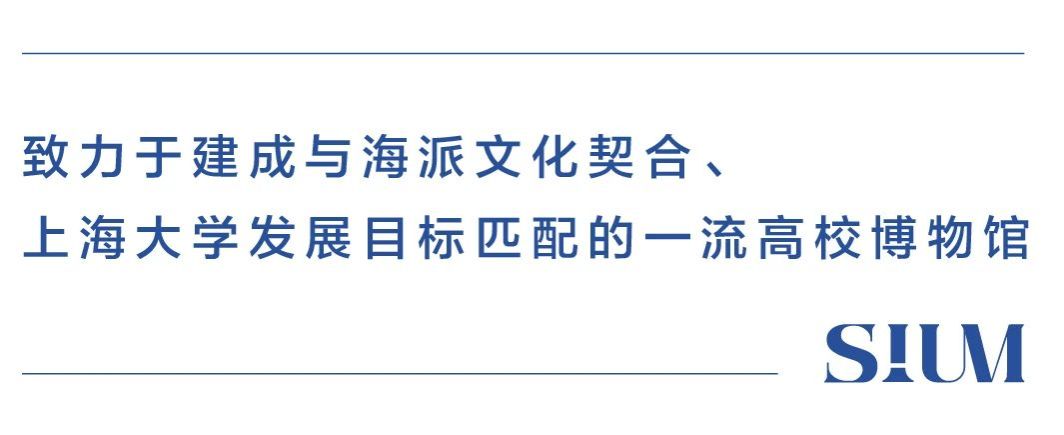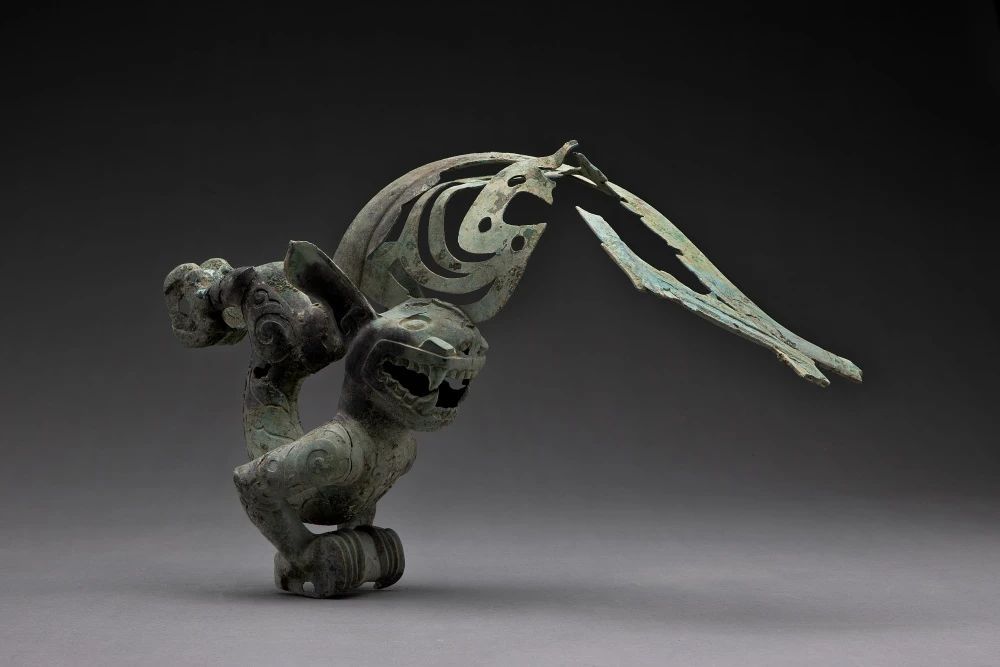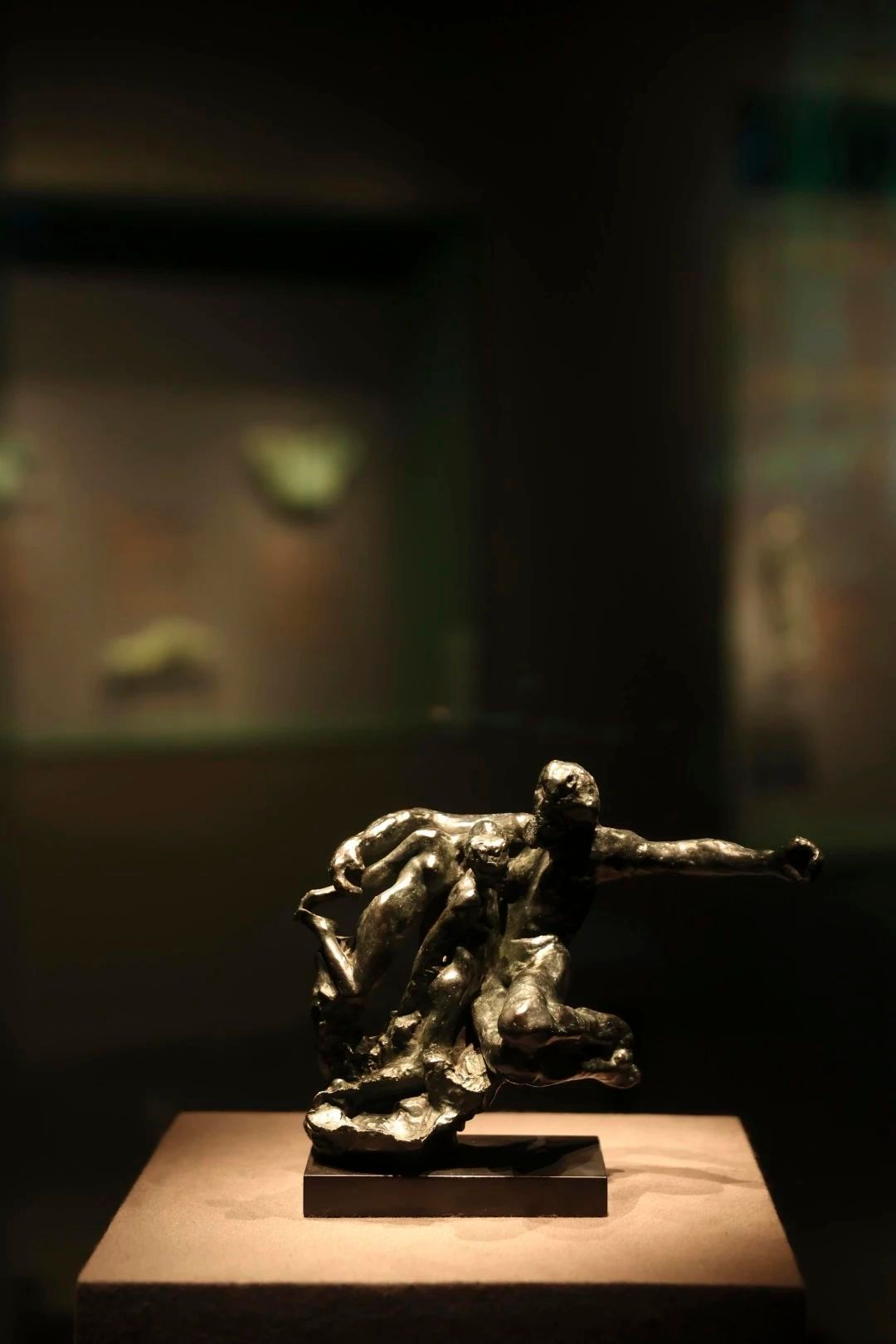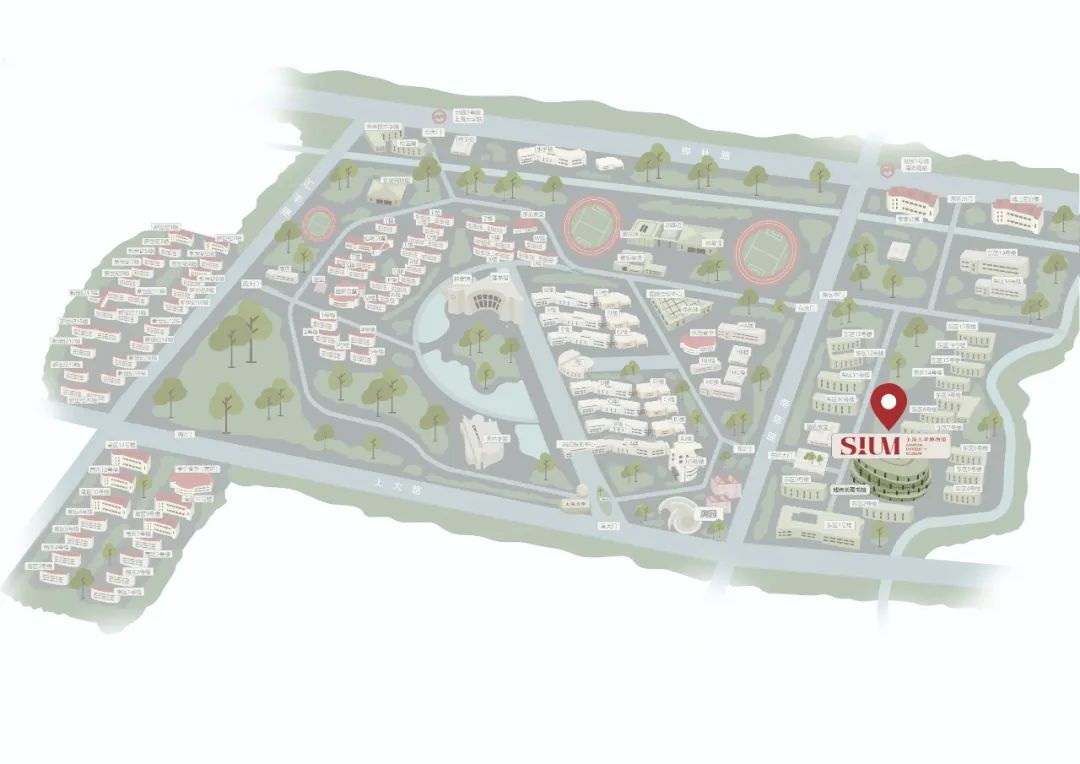
“沉睡三千年,一醒惊天下”的三星堆遗址,是中华文明璀璨星河中明亮而神奇的一颗。
罗丹是“现代雕塑之父”,他的作品中饱含对生命、自然的歌颂、热爱与忧思。
在上海大学博物馆举办的特展——“青铜之光:三星堆与罗丹的超时空对话”展出了许多三星堆、金沙遗址出土文物和罗丹及其同时代雕塑家的作品,让我们一起来详细了解展品背后的故事吧!
青铜虎

· 商代后期(公元前1300年—前1100年)
· 长34.5厘米,宽15.5厘米,高32厘米
· 2022年出土于四川广汉三星堆遗址八号祭祀坑,K8⑨:692
· 四川省文物考古研究院藏
· Late Shang Dynasty (1300B.C. - 1100B.C.)
· L. 34.5 cm; W. 15.5 cm; H. 32 cm
· Unearthed from No. 8 sacrificial pit at the Sanxingdui Site in Guanghan, Sichuan, in 2022,K8 ⑨ :692
· Collection of Sichuan Provincial Cultural Relics and Archaeology Research Institute
整体形态前倾。圆眼、方鼻、额部凸起,张口、露齿,椭方大耳,耳下端略呈弧形,耳末端呈尖状。 身体弯曲,胸前饰云雷纹,身体两侧饰羽纹,腹部两侧各有一排鳞甲,四爪前后分别两两相连,呈抓握状,前后爪部两侧均有一圆形孔洞,腿部饰云纹。尾部长出一翅翼,与额部相连,部分残缺,体大上扬,镂空,有三个圆形小孔,翅翼尾部变形弯曲。在古蜀信仰中,虎崇拜占有重要地位。该青铜虎整体威猛有力,表现了古蜀人对力量的崇拜。在三星堆遗址中出土了造型各异、质地不一的虎形象器物,应该是当时人们对虎崇拜的真实写照,其扮演的角色应是祭祀活动中人神之间沟通的灵物,具有重要的象征意义。
This bronze tiger has an overall forward-leaning posture. It has round eyes, a square nose, and a bulging forehead. Its mouth is open, showing its teeth. It also has large cuboid ears, with the lower parts of the ears slightly curved in an arc shape, and the tips of the ears are pointed. The body of the tiger is curved. The tiger is adorned with Yunlei Wen ( 云雷纹 , cloud & thunder pattern) on the chest, Yu Wen ( 羽纹 , feathery pattern) on both sides of the body, and rows of scales on both sides of the abdomen. The four paws are connected in pairs, resembling a grasping position. There is a round hole on both sides of the front and hind paws respectively, while the legs are adorned with Yun Wen ( 云纹 , cloud pattern). The tail looks like a wing and is connected to the forehead. It is partially fragmented, large, upward-pointing, and hollowed, featuring three small round perforations. The end of the tail is curved and stylized. The tiger worship held a significant place in the faith system of the ancient Shu people. The overall majestic and powerful looking of the bronze tiger manifests the reverence of the ancient Shu people for strength. At the Sanxingdui Site, a variety of tiger-shaped artifacts have been unearthed, with different designs and textures. As a representation of the tiger worship, these artifacts functioned as a spiritual medium for the communion between human beings and deities in sacrificial activities.
创世记

· 奥古斯都·罗丹(1840 — 1917)
· 青铜
· 高 20 厘米,宽 25.5 厘米,深 11 厘米
· Auguste Rodin (1840 - 1917)
· Bronze
· H.20cm; W.25.5cm; Pr.11cm
组合雕塑是罗丹的一个非常显著的雕塑技法,代表了他在雕塑领域的创新和现代性。罗丹以非传统的方式将这些元素组合在一起,创造出独特而复杂的作品。这些组合雕塑常常具有强烈的情感和深刻的主题,常常引发观众深刻的情感共鸣。《创世记》这件组合雕塑作品由《地狱之门》中 的三个人物组成,一个是左臂向前伸展的“被惩罚的女人”。创作灵感明显受米开朗琪罗的影响,因为米开朗琪罗在西斯廷教堂中最著名的作品名为“创世记”,讲述的是著名宗教故事,上帝伸出手臂给予亚当生命。罗丹的这件雕塑和米开朗琪罗的画作同名,且“被惩罚的女人”也正在伸出双臂。这个“被惩罚的女人”右臂则抱住名为“永恒的偶像”中的两个人物,但在这里,这两个人物前后交错挨着,而在《地狱之门》中他们是面对面的。这件作品创作于 1890 年至 1900 年之间,属于罗丹中期的作品,较为成熟,是组合雕塑的典范。罗丹的组合雕塑技法使他成为现代主义雕塑的先驱之一,他的作品为后来的艺术家提供了启发, 激发了他们创作复杂和多元化的雕塑作品。在底座前方有罗丹签字 A.Rodin。
Assemblage is one of the most significant techniques for Rodin, representing his innovation and modernity in sculpture. Rodin often combined different sculptural elements in unconventional ways and created unique and intricate works. These assembled works are typically characterized by intense emotions and profound topics that deeply resonate with readers. Taking The Creation as an example. It comprises three figures from The Gates of Hell, one of which is the punished woman, whose left arm extends forward. Obviously, Rodin got his inspiration from Michelangelo’s masterpiece The Creation of Adam in the Sistine Chapel, a work illustrating the well-known religious story of God reaching out his arm to give life to Adam. Likewise, the punished woman in the assemblage is stretching out her arms and embracing two figures from Eternal Idol with her right arm. In this piece, the two figures face the same direction, whereas in The Gates of Hell, they face each other. Created between 1890 and 1900, The Creation is one of Rodin’s mid-term works and regarded as a representative of assembled statues. With remarkable assemblage technique, Rodin pioneered modernist sculpture, and his works inspired later artists in the creation of complex and diverse sculptures. There is Rodin’s signature “A. Rodin” in the front of the pedestal.
展览时间:
2023年12月13日至2024年2月1日
展览地点:
上海大学博物馆一层临展厅
(上海市宝山区南陈路333号)
开放时间:
周一至周日8:30-16:30(16:00停止入馆)
定时讲解:
周一至周日10:00、14:00、15:30
校内师生凭本人一卡通入馆,无需预约
校外观众采取网上预约方式入馆,扫描下方二维码或关注“上海大学博物馆”微信公众号,点击“个人预约”。

/地址/
上海大学博物馆
(南陈路333号)


